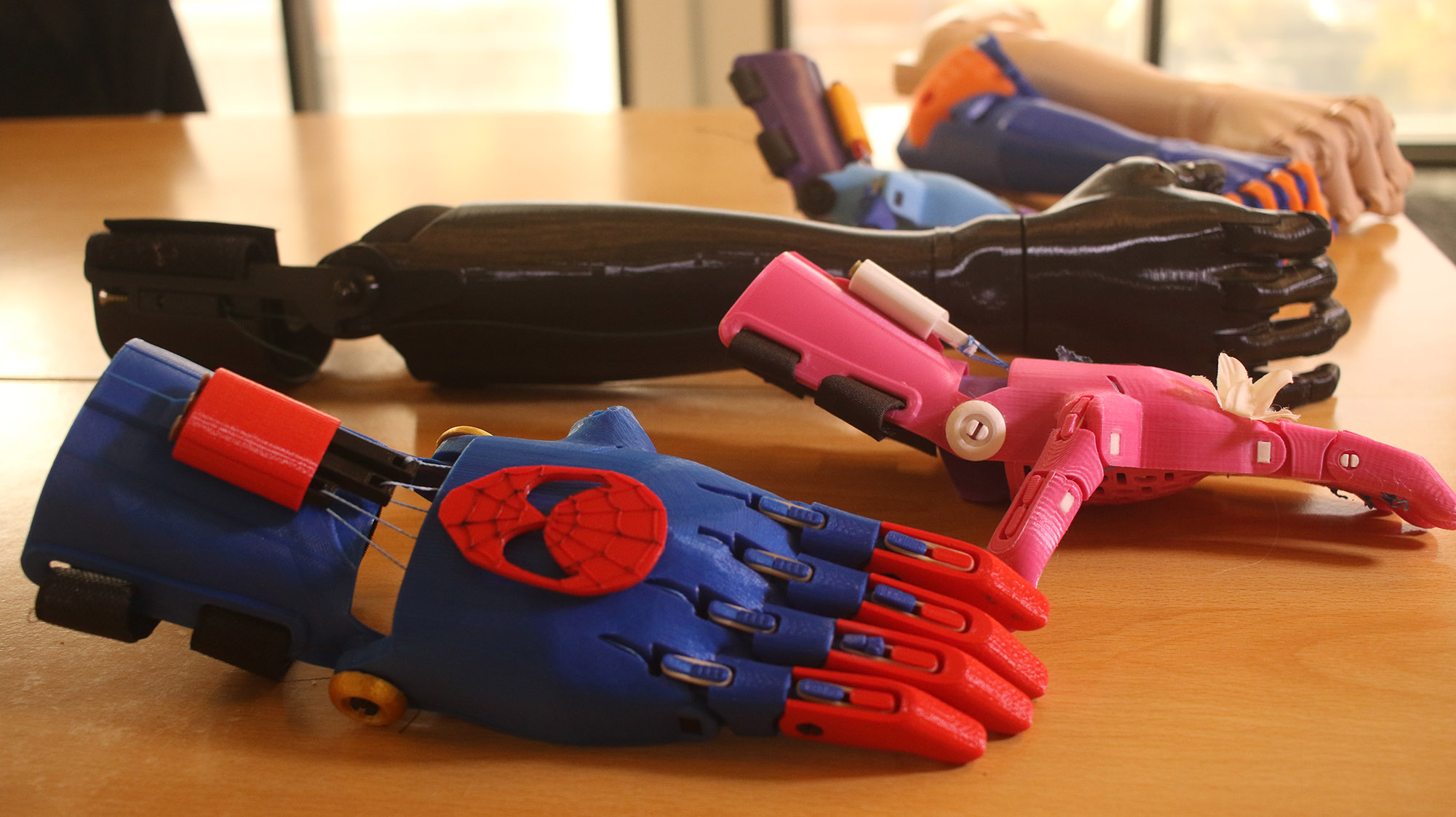( Spanish) — Walter Martínez clearly remembers the day he received his new hand, printed in 3D. “It was a before and after,” he told at his home in Montevideo. “Now I can tie my shoes, something I couldn’t do,” says this former truck driver who lost part of his left hand in a work accident in 2021 with joy.
Walter is one of more than 100 beneficiaries of the Manos de Héroes foundation, which provides free 3D-printed prostheses to children and adults.
This foundation was created by electrical engineer Andrea Cukerman in 2020. “The criteria is to help everyone. No one is going to lose a hand,” Cukerman told .
“When I started the project in 2020, I didn’t know what was going to happen. I didn’t know if we were going to be able to make one hand or if we were going to be able to make 10 hands, but I knew that this was working in other parts of the world and not in Uruguay”, explained Cukerman.
By the time the foundation was in its first year, it had delivered 35 prostheses. By June 2023, it managed to deliver more than 130 prostheses for children and adults. In addition to hands or fingers, the foundation developed a 28-part bionic arm that helps people with amputations above the elbow.
3D printing is the great differential of this initiative. “This technology is wonderful because anything you can imagine you can draw on the computer and then send to print … You can imagine making a hand, a body part,” Cukerman told .
The foundation is in contact with similar organizations around the world who share their designs for free. “Just as we take those designs, all the modifications that we make we turn them over again, because Uruguayan children are not so different from children in Europe and children in the United States, in Mexico, where even then a kind of a supportive community, where all the people want to help,” says Cukerman.
Cost, time and “Spider-Man”
3D printing has two great advantages. On the one hand, there is the cost of materials, which, Cukerman explains, is very low. And on the other, the speed with which it is printed. In the market, the cost of a prosthesis similar to these, depending on the complexity of its design, can cost thousands of dollars.
The various models of prostheses created by the Manos de Héroes Foundation. (Photo: Gabriel Rodríguez/ )
The great challenge facing this foundation is that each prosthesis must be specially adapted for each user. Before construction begins, the beneficiary is shown how to take measurements and how to send photos so that the design can be done.
“They gave it to me, I put it on and it fit me perfectly”, explains Walter. In addition, he says that he did not require any type of adaptation to use it.
One of the things that surprised Andrea Cukerman the most was that the children asked for colored and decorated hands. “It is the children themselves who tell you: I want it blue combined with green, I want it from Spider-Man, I want it from my soccer team. It is knowing how to listen and ask ”, she adds.
These personalized colored hands are the ones that ended up giving the foundation its name.
New projects
Cukerman proudly displays one of the foundation’s most complex designs. The “bionic arm”.
“We made a bionic arm that works through myoelectrics, which are like a kind of sensor that is placed on a muscle. Then, when that muscle is tensed, the sensor captures that movement, sends the signal to a microprocessor that makes the motors move, that makes the hand open and close, so that it is not only something aesthetic, but also has functionality.” Cukerman explains.
This movement allows different things to be held, such as a glass, a pencil or a cell phone.
The foundation, which is supported by donations from individuals and the voluntary work of several collaborators, mainly helps low-income people.

Walter Martínez holds a clamp with his prosthesis made by Mano de Héroes. (Photo:Gabriel Rodríguez/ )
What Cukerman highlights the most is the satisfaction of being able to improve the self-esteem of the beneficiaries. “Beyond the functionality of being able to grab and hold things, which is not a small thing, it greatly improves people’s self-esteem. Adults suffer a lot when they are amputees. Very much. and the children suffer bullying in the schools. So give them something and give them something that makes them feel special, that makes them feel unique. That is the engine we have”.
Walter has had his “Hero Hand” for just over six months. Since then he has been able to drive his private car and perform other tasks again. “You go out into the street, you go out into society in a different way,” he says.
Walter is not only happy with his new hand, but also very grateful to the foundation. “I think that all of us who received the prosthesis, both children and adults, are grateful because it is complementing us with something. But at the same time we are also grateful to know that there are people like that, who can give a hand to another person”.


![[Img #74664]](https://thelatestnews.world/wp-content/uploads/2024/12/James-Watson-The-controversial-genius-behind-the-double-helix-150x150.jpg)








![[Img #74664]](https://thelatestnews.world/wp-content/uploads/2024/12/James-Watson-The-controversial-genius-behind-the-double-helix-300x200.jpg)

